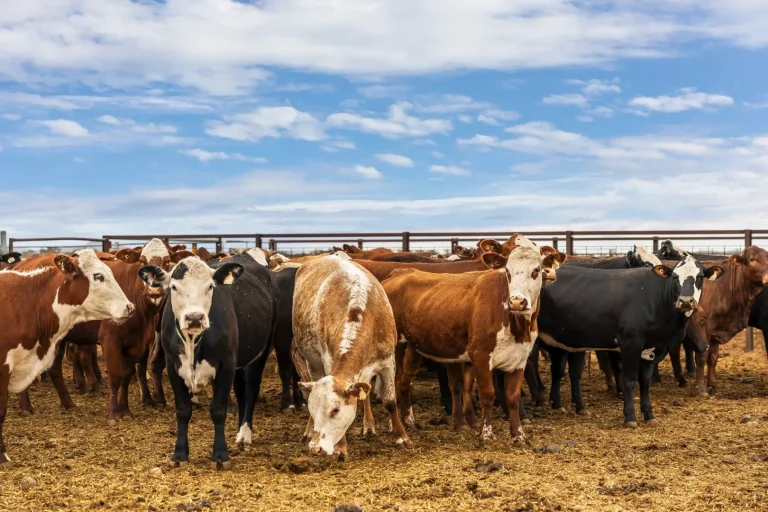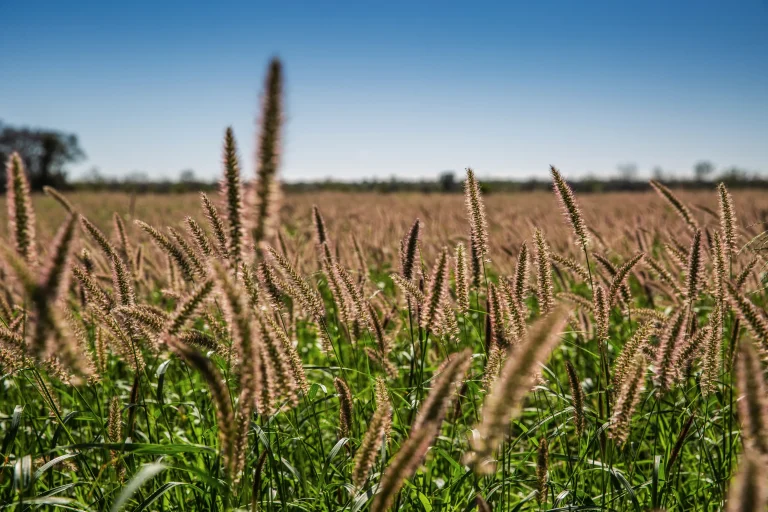Essential Strategies for Increasing Profitability in Cotton Farming Ventures
Cotton farming represents one of Australia’s most significant agricultural sectors, yet many operators struggle to maximise returns from their investments. Modern cotton production faces mounting challenges from variable weather patterns, fluctuating commodity prices, and rising operational costs. For agricultural investors and existing cotton producers, implementing effective strategies for increasing profitability in cotton farming ventures has become more crucial than ever before.
The path to enhanced cotton farming returns requires a comprehensive approach that combines advanced agricultural techniques, strategic property management, and informed market positioning. At Agribusiness Horizons, we work closely with cotton producers and agricultural investors to identify and implement profit-enhancing opportunities that transform ordinary farming operations into highly productive enterprises. Whether you’re considering acquiring cotton-producing land or optimising existing operations, understanding these profitability strategies can significantly impact your agricultural investment success.
This comprehensive guide examines proven methods for boosting cotton farming profitability, from operational improvements to strategic property decisions that position your venture for long-term success.
Understanding the Cotton Farming Investment Landscape
Cotton cultivation in Australia has undergone remarkable transformation over recent decades, with technological advances and improved farming practices creating new opportunities for profit enhancement. The Australian cotton industry continues to attract both domestic and international investors seeking exposure to agricultural commodities that offer stable returns and portfolio diversification benefits.
Modern cotton farming ventures operate within a complex environment where success depends on multiple interconnected factors. Weather variability, soil conditions, water availability, and market timing all play crucial roles in determining profitability outcomes. However, the most successful cotton producers have learned to manage these variables through strategic planning and operational excellence that forms the backbone of effective cotton profitability enhancement methods.
The evolution of cotton production technology has opened new avenues for profit optimization that were previously unavailable to agricultural operators. From precision agriculture tools to advanced irrigation systems, today’s cotton farmers have access to technologies that can significantly improve yields while reducing input costs. Understanding how to leverage these technological advances represents a key component of any comprehensive strategies for increasing profitability in cotton farming ventures.
Agricultural property values in cotton-growing regions have reflected the sector’s potential for strong returns, with well-managed cotton farms commanding premium prices when brought to market. This appreciation in land values provides an additional layer of return for investors who implement effective cotton profitability enhancement methods.
Operational Excellence: Core Strategies for Increasing Profitability in Cotton Farming Ventures
Soil Health and Crop Management Optimization
Successful cotton farming ventures begin with exceptional soil management practices that maximize the productive potential of agricultural land. Soil health directly impacts cotton yields, with healthy soils supporting stronger plant growth and higher fiber quality. Implementing comprehensive soil testing programs allows operators to understand nutrient requirements and adjust fertilization strategies accordingly.
Cotton production profit optimization starts with understanding the specific needs of your soil and climate conditions. Different cotton varieties perform better under varying environmental conditions, and selecting the right cultivars for your specific location can significantly impact profitability. Working with agricultural advisors who understand local growing conditions helps ensure optimal variety selection.
Water management represents another critical component of operational excellence in cotton farming. Efficient irrigation systems not only conserve this precious resource but also ensure consistent crop performance throughout the growing season. Modern irrigation technology allows for precise water application that maximizes cotton yields while minimizing waste and operational costs.
Advanced Agricultural Technology Integration
Today’s most profitable cotton farming operations integrate cutting-edge agricultural technology to optimize every aspect of production. Precision agriculture tools enable farmers to apply inputs with unprecedented accuracy, reducing waste while maximizing crop response. GPS-guided equipment ensures consistent planting patterns and reduces overlap in field operations, contributing to improving cotton farm returns.
Drone technology and satellite imagery provide valuable insights into crop health and development patterns across entire properties. These tools allow operators to identify potential issues early in the growing season and implement targeted interventions that protect yields and profitability. Data-driven decision making has become a hallmark of successful cotton farming ventures that prioritize cotton production profit optimization.
Automated monitoring systems track everything from soil moisture levels to pest populations, providing real-time information that supports optimal management decisions. When properly implemented, these technologies typically pay for themselves through improved efficiency and enhanced crop performance that supports long-term strategies for increasing profitability in cotton farming ventures.
Integrated Pest and Disease Management
Effective pest management strategies protect cotton crops while minimizing input costs and environmental impact. Integrated pest management approaches combine biological controls, cultural practices, and targeted chemical applications to maintain healthy crops throughout the growing season. This balanced approach often proves more cost-effective than relying solely on chemical treatments.
Understanding pest life cycles and implementing preventive measures reduces the need for reactive treatments that can be both expensive and potentially damaging to beneficial insects. Many successful cotton producers have found that investing in pest monitoring and early intervention strategies provides excellent returns through reduced crop losses and lower treatment costs.
Disease prevention through crop rotation and resistant varieties offers another avenue for improving cotton agricultural returns. Rotating cotton with other crops breaks disease cycles and helps maintain soil health, contributing to long-term sustainability and profitability.
Strategic Market Positioning and Timing
Marketing represents a crucial yet often overlooked component of cotton farming profitability. Understanding market cycles and developing effective marketing strategies can significantly impact the prices received for cotton production. Forward contracting, basis trading, and other risk management tools help protect against price volatility while securing favorable pricing for future delivery as part of comprehensive enhancing cotton agricultural returns approaches.
Many profitable cotton operations develop relationships with multiple buyers to ensure competitive pricing and reliable market access. Diversifying marketing channels reduces dependence on any single buyer and often results in better overall pricing for the crop. Quality premiums for superior fiber characteristics can also contribute significantly to enhanced returns through effective strategies for increasing profitability in cotton farming ventures.
Storage and logistics capabilities affect marketing flexibility and profitability potential. On-farm storage allows producers to market cotton when prices are most favorable rather than being forced to sell immediately after harvest. Transportation efficiency also impacts net returns, with strategically located operations often enjoying cost advantages.
Developing cotton farming revenue strategies requires understanding both local and global market dynamics that influence cotton prices. Weather events in other cotton-producing regions, changes in export demand, and currency fluctuations all affect the prices received by Australian cotton producers who implement sophisticated cotton profitability enhancement methods.
Comparison of Cotton Profitability Enhancement Approaches
| Strategy Category | Implementation Complexity | Timeline for Returns | Sustainability Impact |
|---|---|---|---|
| Soil Health Programs | Moderate | Medium-term | High positive impact |
| Technology Integration | High | Short to medium-term | Moderate positive impact |
| Water Management Systems | Moderate to High | Medium-term | High positive impact |
| Pest Management Optimization | Low to Moderate | Immediate to short-term | High positive impact |
| Market Timing Strategies | Low | Immediate | Neutral impact |
| Crop Rotation Programs | Low | Long-term | High positive impact |
This comparison illustrates that improving cotton farm returns often requires a balanced approach combining multiple strategies with varying implementation timelines and complexity levels.
How Agribusiness Horizons Supports Cotton Farming Profitability
At Agribusiness Horizons, we understand that successful strategies for increasing profitability in cotton farming ventures require both operational expertise and strategic property management. Our comprehensive approach to agricultural advisory services helps cotton producers and investors identify opportunities for profit enhancement while managing the risks inherent in agricultural investments.
Our valuation and financial analysis services provide cotton farming operations with detailed assessments of current performance and identification of improvement opportunities. Through comprehensive property evaluations, we help clients understand the true potential of their cotton-producing assets and develop strategies to unlock that value.
Water rights advisory represents a particularly important service for cotton producers, given the crop’s irrigation requirements. Our team helps clients optimize water asset portfolios, ensuring adequate water security while managing costs. Climate resilience planning has become increasingly important as weather patterns continue to evolve, and our expertise helps cotton operations adapt to changing conditions.
Our strategic advisory services work with cotton producers to develop comprehensive business plans that integrate operational improvements with market positioning strategies. This holistic approach ensures that profitability improvements are sustainable and aligned with long-term investment objectives. Whether you’re looking to acquire additional cotton-producing land or optimize existing operations, our team provides the expertise needed to achieve your goals.
We also assist with the complex process of agricultural property transactions, helping clients identify premium cotton-producing properties that offer excellent potential for profitability enhancement. Our market intelligence and buyer networks ensure that cotton farming investments receive maximum exposure when the time comes for divestment.
Future-Focused Approaches to Cotton Farming Success
The cotton farming industry continues to advance, with emerging technologies and sustainable practices creating new opportunities for profitability enhancement. Precision agriculture is becoming increasingly sophisticated, with artificial intelligence and machine learning algorithms providing insights that were previously impossible to obtain. These advances promise to further optimize input applications and crop management decisions.
Sustainability considerations are increasingly influencing cotton farming profitability, with markets rewarding producers who demonstrate environmental stewardship. Carbon farming opportunities and biodiversity programs provide additional revenue streams for cotton operations that implement sustainable practices. These programs often complement existing cotton production while providing diversified income sources.
Climate adaptation strategies are becoming essential components of long-term cotton farming success. Developing resilience to weather variability through improved water storage, drought-tolerant varieties, and flexible cropping systems helps protect profitability during challenging seasons. Forward-thinking cotton producers are investing in infrastructure and practices that position their operations for success regardless of climate conditions.
Automation and robotics are beginning to transform cotton farming operations, with autonomous equipment reducing labor costs while improving precision and efficiency. Early adopters of these technologies often gain competitive advantages through reduced operational costs and improved crop quality.
Conclusion and Strategic Considerations
The path to enhanced cotton farming profitability requires a multifaceted approach that combines operational excellence, strategic market positioning, and long-term planning. Successful strategies for increasing profitability in cotton farming ventures integrate technological advances with sound agricultural practices and informed business decisions. The most profitable operations view cotton farming as both an agricultural pursuit and a sophisticated business enterprise that demands professional management and strategic thinking.
Modern cotton producers face unprecedented opportunities to optimize their operations through technology integration, sustainable practices, and strategic property management. However, capitalizing on these opportunities requires expertise, planning, and often significant capital investment. The complexity of today’s agricultural environment makes professional guidance more valuable than ever before.
As you consider the future of your cotton farming venture, several thought-provoking questions deserve careful consideration: How might emerging agricultural technologies transform your operation’s profitability potential? What role should sustainability initiatives play in your long-term strategy? How can you position your cotton farming assets to benefit from evolving market conditions and consumer preferences?
If you’re ready to unlock the full profit potential of your cotton farming venture, our team at Agribusiness Horizons stands ready to help. Contact us today to discuss how our comprehensive agricultural advisory services can support your profitability objectives and position your operation for long-term success. Let us help you transform your cotton farming investment into a highly profitable and sustainable agricultural enterprise.



